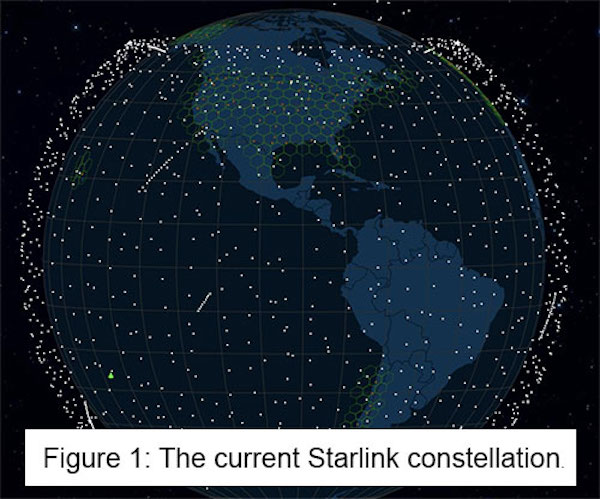Farm equipment manufacturers have invested billions in state-of-the-art technology that has helped make US row crop producers the most efficient in the world. Unfortunately, nearly one-third of US farmland acres lack sufficient broadband service to capitalize on digital technologies, and the lack of access is even greater in less developed parts of the world. Farm equipment maker John Deere hopes to remove this major roadblock by teaming up with SpaceX’s “Starlink” service to provide high-speed satellite internet for its tractors and other farm equipment.
In the second half of this year, John Deere will begin equipping both new and existing machines across the US and Brazil with Starlink. According to Deere Chief Technology Officer Jahmy Hindman, the industry-first deal will provide satellite connectivity to tractors, seed planters, crop sprayers, and other equipment in areas that lack adequate broadband service, allowing them to use Deere’s digital products. “This takes us a step closer to ubiquitous connectivity anywhere in the world. The biggest opportunity for us is to expose existing technologies to more customers,” Hindman told the Wall Street Journal.
According to the US Department of Agriculture (USDA), the major components of digital agriculture fall into three features: (1) data and data collection systems, (2) decision support (DS) tools, and (3) data-driven equipment and input adjustments. Examples under the first category include data from yield and soil monitoring equipment, various sensors, and imagery from drones, aircraft or satellites. DS tools include (electronic) maps or other visualizations of georeferenced data, in addition to smartphone apps and other sources of analysis with management recommendations. Technologies falling under the third category are largely guidance systems, automated section control, and variable rate applicators.
Adoption of automated guidance has increased sharply in the past 20 years, with application on well over 50% of the acreage planted to corn, cotton, rice, sorghum, soybeans, and winter wheat, according to data from the USDA’s Agricultural Resource Management Survey (ARMS). However, technologies such as yield maps, soil maps, and variable rate technologies (VRT) have been adopted on only between 5% and 25% of total U.S. planted acreage for winter wheat, cotton, sorghum, and rice.
The reasons behind slow adoption rates of digital technologies are many and varied but partial blame lies with a lack of Wi-Fi service in many rural areas. According to the latest data, about 30% of land farmed in the US lacks access to high-speed broadband. That jumps to 70% in Brazil. In an effort to fill the rural broadband gap, John Deere began testing various satellite providers last year, ultimately settling on Starlink.
Deere says the satellite communications (SATCOM) solution will connect both new and existing machines through satellite internet service and ruggedized satellite terminals. Those terminals, to be installed by John Deere dealers, along with a modem and Starlink antennae, will fully enable technologies such as autonomy, real-time data sharing, remote diagnostics, enhanced self-repair solutions, and machine-to-machine communication, according to Deere.
As for the cost of the equipment and broadband service, Deere has not yet provided details. The company has previously said it aims to generate 10% of its revenue through “recurring” models such as subscription fees by 2030. Starlink already provides internet service to 2.3 million users in 70 countries, including the US, via some 5,300 satellites in low-Earth orbit. (Sources: The Wall Street Journal, USDA), Popular Mechanics)








